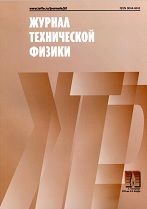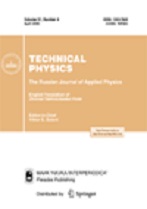|
This article is cited in 1 scientific paper (total in 1 paper)
Plasma
Structure of magnetic plasma fluctuations in the Uragan-3M torsatron at rare collision frequencies
V. K. Pashnev, E. L. Sorokovoy, A. A. Petrushenya, F. I. Ozherel’ev
Institute of Plasma Physics, National Science Center Kharkiv Institute of Physics and Technology, Kharkiv, Ukraine
Abstract:
Fluctuations of the poloidal component of the plasma magnetic field in the frequency range of 0.5–50 kHz are studied in the Uragan-3M (U-3M) torsatron. Hydrogen plasma is produced and heated by RF fields at frequencies close to that of the ion cyclotron. The studies are carried out using a set of 15 magnetic sensors installed in one of the torus cross sections. RF heating provided the plasma with rare collision frequencies and the presence of the bootstrap current. The study is carried out when the maximum amplitude of magnetic fluctuations is observed and their connection with the plasma energy content is noticeable. Two types of vibrations are observed. In the first type, the current structure rotates with a certain frequency mainly in the direction of the rotation of electrons in the magnetic field, and the amplitude varies slowly with time (the rotating structure). For the second type, the spatial structure does not rotate, but its amplitude changes with a certain frequency (the standing structure). The frequencies of fluctuations and rotations are close for structures with a given poloidal wave number. The standing vibration structures with different poloidal wave numbers in this frequency range are correlated. The maximum amplitude of the rotating structures is observed with $m$ = 2, and for the standing structures with m = 3 and reaches the values of $\tilde{B}\le$ 0.3 G in the confinement region. The vibration frequency does not depend on poloidal wave number m for the studied cases; $m$ = 0, 1, 2, 3.
Received: 05.03.2018
Revised: 02.10.2018
Accepted: 21.11.2018
Citation:
V. K. Pashnev, E. L. Sorokovoy, A. A. Petrushenya, F. I. Ozherel'ev, “Structure of magnetic plasma fluctuations in the Uragan-3M torsatron at rare collision frequencies”, Zhurnal Tekhnicheskoi Fiziki, 89:5 (2019), 656–664; Tech. Phys., 64:5 (2019), 606–614
Linking options:
https://www.mathnet.ru/eng/jtf5607 https://www.mathnet.ru/eng/jtf/v89/i5/p656
|


| Statistics & downloads: |
| Abstract page: | 27 | | Full-text PDF : | 5 |
|





 Contact us:
Contact us: Terms of Use
Terms of Use
 Registration to the website
Registration to the website Logotypes
Logotypes








 Citation in format
Citation in format 
